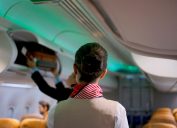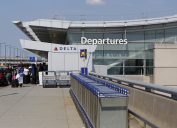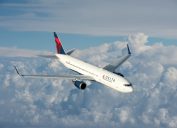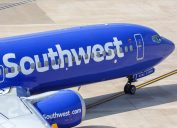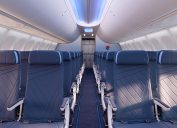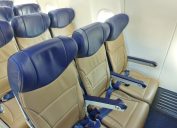Boeing Is "Putting Out Defective Airplanes," Whistleblower Says in New Testimony
A former engineer with the company says he has significant concerns about passenger safety.
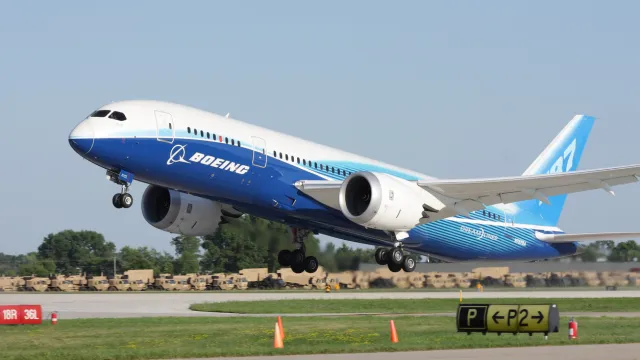
With all of the mid-flight incidents in the past few months, very few have drawn as much attention as the issues currently faced by Boeing. The aviation giant is under investigation after an accident revealed that the aircraft it manufactures could pose a safety threat to the traveling public, with its 737 Max 9 model being of particular concern. And now, a whistleblower has followed up previous allegations of manufacturing concerns at Boeing with a congressional testimony—going so far as to say the company is "putting out defective airplanes."
RELATED: Southwest Is Under FAA Investigation After 2 In-Flight Emergencies.
On April 17, former Boeing engineer Sam Salehpour appeared at a Capitol Hill hearing held by the U.S. Senate Committee on Commerce, Science, and Transportation. The whistleblower laid out some of his experiences at the company and testified to manufacturing shortcuts that could endanger travelers.
"I have serious concerns about the safety of the 787 and 777 aircraft, and I'm willing to take on professional risk to talk about them," he said during an opening statement, per CNN. He added that when he voiced concerns within the company, "I was ignored. I was told not to create delays. I was told, frankly, to shut up."
Salehpour went on to describe issues he saw while working at Boeing, which included workers jumping up and down on parts of planes to realign small gaps when connecting separately assembled pieces of the fuselage. During an interview with The New York Times last week, he explained that this could deform the composite materials used to fasten them together and cause them to weaken over time. Hypothetically, this could cause a "catastrophic failure" in which the aircraft would fall apart while flying.
At a briefing earlier this week, Boeing refuted the claims, saying that the gaps were 5/1000th of an inch wide and "hyper-conservative" by industry safety standards, CNN reports. But Salehpour refuted those claims, saying that even the tiny gaps "can be a matter of life and death" before calling out the company's apparent lack of concern for proper oversight.
"I have a very negative attitude toward the safety culture [at Boeing]," he later said during his testimony. "When I bring something to my boss, he prevents me from even documenting or sending information. When a quality manager says don't send to a subject matter expert… that's concerning."
Later in the hearing, Ed Pierson, a former Boeing manager and the current executive director of The Foundation for Aviation Safety, went even further, alleging that some government regulators were complicit in the company's behavior, Simple Flying reports.
"The [National Transportation Safety Board] NTSB, [Federal Aviation Administration] FAA, and [U.S. Department of Transportation] DOT ignored Boeing's manufacturing problems—until the Alaska Airlines Flight 1282 blowout accident," he said, referencing the January incident in which a door plug blew off a Boeing plane mid-flight. "The leaders of these government agencies were finally forced to admit it, and now they are claiming they are on top of it and taking appropriate action. Don't believe it."
When reached for comment by email, a Boeing spokesperson pointed out the safety records for the 787, which it says has transported more than 850 million passengers in 13 years of service. They added that the planes could fly for "at least 30 years" before requiring major maintenance.
"Under FAA oversight, we have painstakingly inspected and reworked airplanes and improved production quality to meet exacting standards," they said in the statement. "We are fully confident in the safety and durability of the 787 Dreamliner."
The spokesperson also defended the 777, which they say has safely flown more than 3.9 billion passengers since its inception. "We are fully confident in the safety of the 777, which remains the most successful widebody airplane family in aviation history."
The company also addressed the issue of speaking up about concerns within the company. "Since 2020, Boeing has taken important steps to foster a safety culture that empowers and encourages all employees to raise their voice," Boeing said. "We know we have more work to do, and we are taking action across our company."
"Retaliation is strictly prohibited at Boeing," the company added.
Best Life has reached out to Salehpour for comment on the Senate hearing and will update this article with any response.
The latest revelations come after a string of incidents involving the company's aircraft within the past few years. Read on for more of the accidents and events that have led Boeing to this point.
1
Two Boeing 737 Max crashes led to a worldwide grounding of the aircraft.
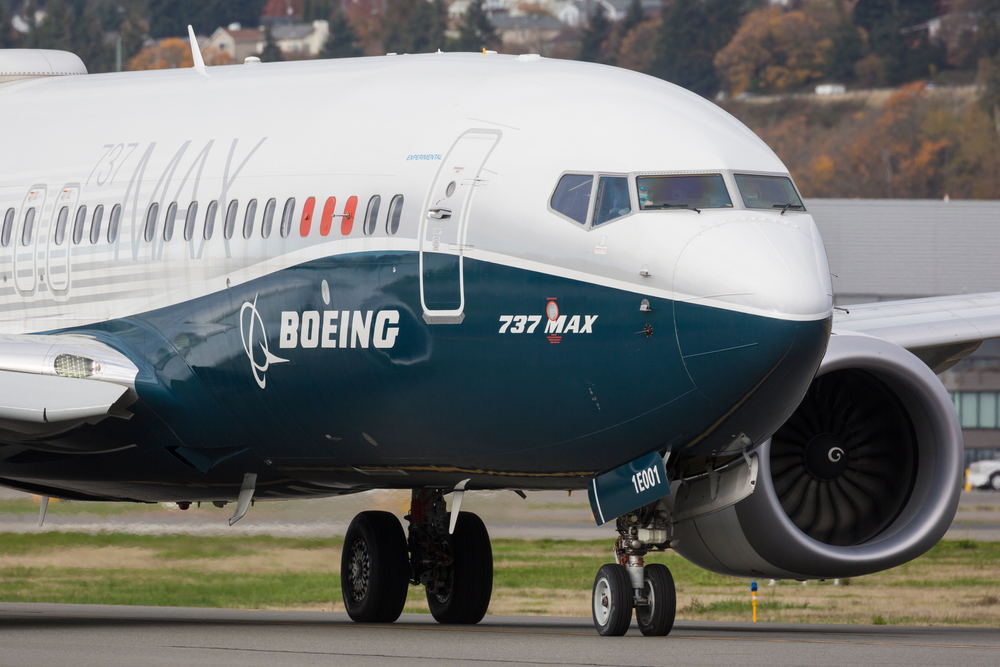
The first major incidents involving the Boeing 737 Max aircraft were a pair of tragic accidents. The first occurred in October 2018 when Lion Air Flight 610 crashed into the Java Sea off Indonesia, killing 189 people onboard, Al Jazeera reports. Five months later, Ethiopian Airlines Flight 302 crashed, killing all 157 passengers.
The second incident sparked a worldwide grounding of the 737 Max plane model involved in the accidents. A subsequent investigation found that a flight-stabilizing mechanism known as MCAS malfunctioned and made it hard for pilots to determine airspeed and altitude, CNET reported.
RELATED: 7 Clothing Items to Never Wear Through Airport Security, Experts Say.
2
A door plug blew off an Alaska Airlines 737 mid-flight.

Last January, another incident involving a Boeing 737 Max thrust the aircraft's safety back into the spotlight when a door plug blew off during an Alaska Airlines flight. Miraculously, no one was killed or seriously injured in the incident.
The incident led to airlines grounding the model while investigations into the accident were carried out, The Washington Post reports. It was later discovered that the plug had been installed missing several crucial bolts required to hold it in place.
During the April 7 Senate hearing, Pierson decried Boeing's behavior during the incidents. Specifically, he called out the company's withholding of important documents from NTSB investigators as tantamount to a "criminal cover-up."
"Records do exist documenting in detail the hectic work done on the Alaska Airlines airplane—and Boeing's corporate leaders know it too because they fought to withhold these same damning records after the two Max crashes," he said in his opening comments, per CNN.
3
A cargo plane suffered engine failure.

Weeks later, a Boeing 747 suffered an engine failure on an Atlas Air cargo flight out of Miami. The aircraft was able to make an emergency landing without any injuries, The Post reports. An investigation later found a hole the size of a softball near the failed engine.
4
A pair of flights lost tires mid-flight.

Landing gear has also been involved in recent aviation accidents. On Jan. 23, a Delta Air Lines flight scheduled to fly from Atlanta to Bogota, Colombia, had one of its front wheels fall off while still on the runway, per The Post. No passengers were injured during the incident, which involved a Boeing 757 aircraft.
In March, a United Airlines 777 flying from San Francisco also lost one of its front wheels during takeoff. The plane landed without any injuries to passengers or crew. Following the incident, United clarified that the aircraft was designed to land safely with missing or damaged tires, The Post reports.
RELATED: Travelers Warn "Avoid Delta at All Costs" After "Worst Flight Experience."
5
An Alaska Airlines flight landed due to fumes in the cabin.
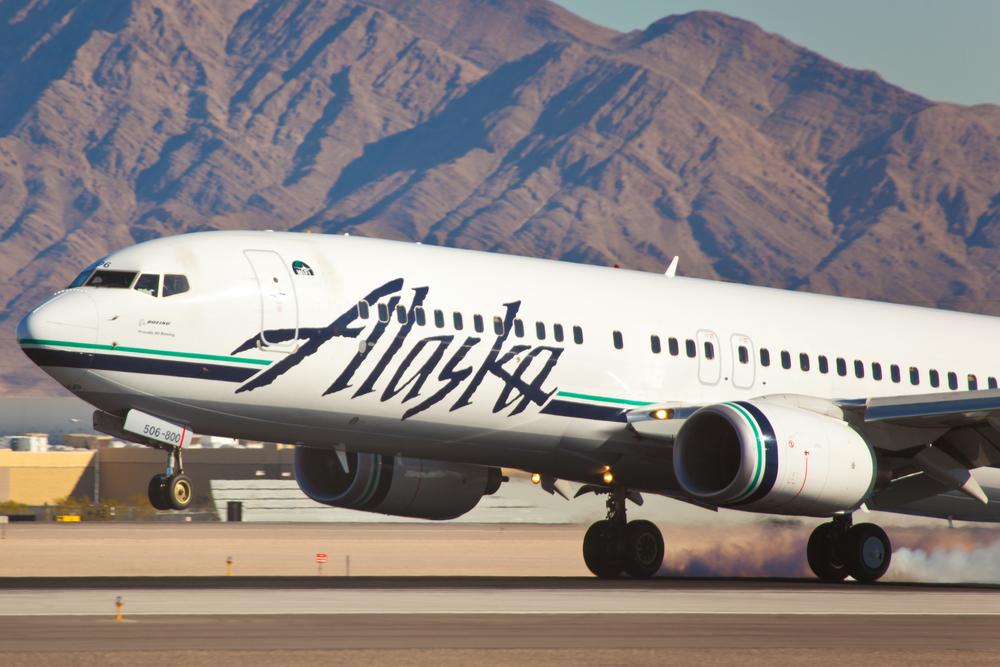
Last month, an Alaska Airlines 737-800 departing for Phoenix was forced to return to Portland, Oregon, and make an emergency landing after passengers and crew noticed the smell of fumes onboard. No one was injured in the incident, and maintenance never determined the cause of the smell.
6
An engine cover fell off a Southwest flight.

On April 7, a Southwest Airlines Boeing 737 was forced to return to Denver airport after an engine cover detached during takeoff and struck one of the plane's wings.
"We all felt kind of a bump, a jolt, and I looked out the window because I love window seats, and there it was," a passenger on the flight told ABC News.
The plane landed safely, and the aircraft maintenance crews are now inspecting and repairing it. No injuries were reported.
This story has been updated to include additional entries, fact-checking, and copy-editing.



